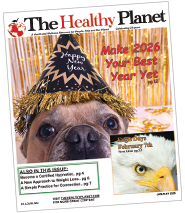By Ava Frick,
DVM, CVC, FAIS
Pain is invisible, but its symptoms are not. We can’t point it out, like a growth or broken bone. But we are aware of its presence, at least in ourselves. Knowing when an animal is in pain can be more difficult.
Depending on the nature of the animal, they may hide the symptoms to avoid being targeted. As in an herbivore (rabbit, deer, mouse) not wanting to appear ill and become someone’s meal, or a chicken who doesn’t want to get pecked on by others. Logically they do not think that, but innately they know. And just like in humans, some complain more about their pain and woes, while others grin and bear it.
Animals do speak to us in many ways. Some of them are; the size of the pupil, movement of ears, quivering of the skin, swishing a tail, avoiding being petted, not wanting to mingle with others, stomping, growling, kicking, bucking, or biting. These are all forms of communication. Some in a whisper and others are more similar to hollering, trying to get the point across.
Other indicators that pain is present to some degree somewhere include; moaning or crying, grinding teeth in rabbits, change in personality, abnormal gait, shifting weight, altered posture, guarding a part of the body, difficulty getting up or down, history of a surgery or injury.
Pain can exist from a recent surgery, injury, sprain, internal organ disease, cancer, and the most common is arthritis. Acute pain is obvious and distressing. Chronic pain is that which lasts over 2 to 3 months and is not resolving. It can often be subtle, and masked as “getting old” or “slowing down.” Those with chronic pain often develop a familiarity with it and make it even more difficult to determine its presence.
Our focus is key on working to eliminate pain. We offer many options to treat the various causes of pain in animals including physical rehabilitation, chiropractic, microcurrent and laser therapy, therapeutic massage and customized exercise programs. Oral support comes in the form of supplements, herbs, medication, and nutritional optimization.
For more information about pain in animals please visit our website at www.AnimalRehabStLouis.com and the International Veterinary Academy of Pain Management at www.IVAPM.org. During the month of September mention The Healthy Planet and we will give your fur baby a FREE pain treatment.
Ava Frick, DVM, CVC, FAIS
Certified in Veterinary Chiropractic
Fellow of the American Institute of Stress
636-549-9100


